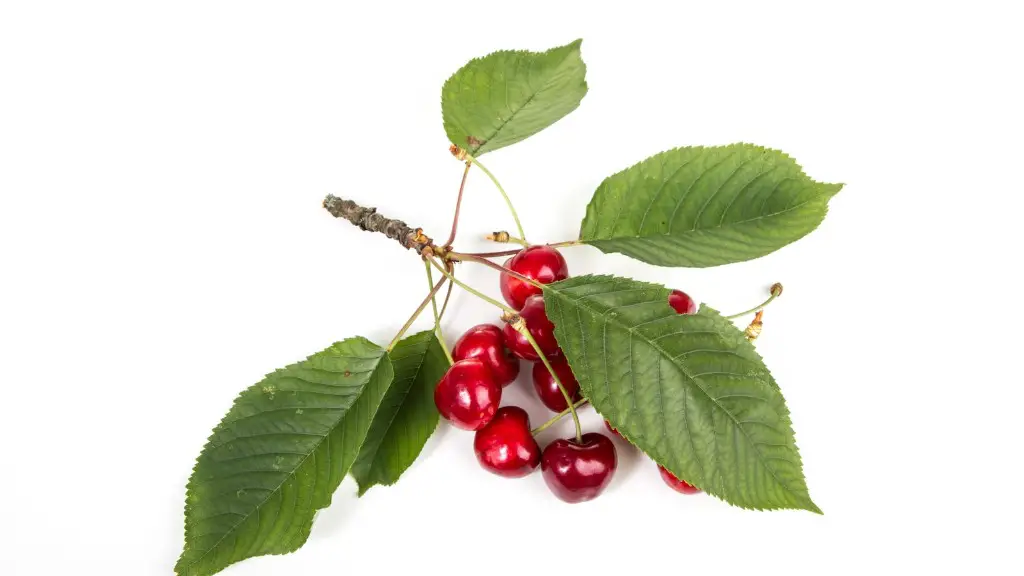Basics of Planting Under a Cherry Tree
Planting under a cherry tree is a great way to beautify your yard, create a shadier environment, and provide additional nutrients to your soil. Whether you choose to create a lush and colorful flower bed, cultivate an edible garden, or something between the two, the options for planting under a cherry tree are endless. But before getting started, it’s important to consider a few things so that you can ensure your plants get the care and support they need to thrive in their cherry tree-clad environment.
Throughout this article, we’ll provide some of the basics about how to successfully plant under a cherry tree, including what kinds of plants to avoid and what you need to be aware of in regard to the environment underneath the tree itself.
Choosing Plants
When trying to decide which plants to grow under a cherry tree think about the canopy of leaves that your plants will be competing with. Most of the light will be blocked either partially or completely by the tree, so it’s important to choose plants that can tolerate low light conditions. Hardiness is also key to choosing the right plants since they will be exposed to shade and larger roots systems.
Good choices for plants under a cherry tree include wood sorrel, lady’s mantel, hostas, sweet woodruff and lily of the valley. Bulbs and wildflowers are another option since they just need light and soil to grow, and are much quicker to spread as opposed to shrubs and trees. You may also want to consider incorporating some edibles such as ginger, chives, garlic and leafy greens such as lettuce, spinach and kale.
Cherry Tree Specifics to be Aware Of
It’s important to understand that a cherry tree can affect the environment beneath it in the form of roots and limbs. Enough shade can prevent the growth of competing root structures, and certain types of trees have dense and aggressive root systems that can make it difficult for plants to grow underneath them.
It’s also essential to be aware of how much watering cherry trees need and when they need it. The surrounding soil beneath the tree can be heavily drier as a result of the tree’s large roots, soaking up most of the rain and moisture in the area. This makes it difficult for plants to thrive, so it’s important to provide extra watering to them during dry periods.
Competing for Nutrients and Space
It’s a common myth that fruits and vegetables cannot be grown under cherry trees. While it is true that the environment and soil structure can be challenging for plants to grow, it is possible to achieve success with some techniques and understanding the specific needs of the plants you’re trying to grow.
One of the biggest challenges faced by plants around cherry trees is having to compete with the tree’s own large and expansive root system, which soaks up much of the surrounding nutrients. But, with careful planning and planting, it is often possible to share the beneficial microorganisms and beneficial fungi needed to support great vegetables and fruits.
It is also important to consider the effect that the cherry tree’s limbs have on the light that reaches the plants below. As much as a cherry tree’s canopy may create a shadier environment for the plants below, it can also create dark patches where, without additional light and water, nothing is likely to grow.
Raised Beds and Containers
Raised beds and containers are a great way to ensure plants get the sun and water that they need for proper growth. Containers can be placed in either the light patches or beneath the overall canopy of the tree. Raised beds also can be built in a similar fashion, as well as provide the opportunity to experiment with different types of soil and make proper use of any fertilizer or microorganisms that may be needed.
Beneficial Insects and Animals
Insects and animals can be beneficial to plants and other organisms that live under the cherry tree, helping the plants to pollinate, reduce the populations of pests, and keep the overall environment healthy. Birds can be attracted to the area with birdhouses and providing food and water, while bees can be attracted to the area with native wildflowers.
It’s also possible to attract more beneficial bugs, such as ladybugs, by planting native plants and avoiding the use of pesticides. Beneficial bugs can help keep the populations of mites, aphids, and other destructive insects in check.
Final Considerations
Before selecting the plants for your garden, take into consideration the specific needs of the plants and what kind of environment the cherry tree creates. Also, think about the kind of enrichments you can provide such as mulch, compost and soil amendments, to supplement the nutrients your plants need. And finally, don’t be afraid to experiment, as some of the most successful gardens in the area were created by trial and error.
Adapting to Different Seasons
When planting and growing plants under a cherry tree, it’s important to consider and understand which changes the plants will experience throughout the different season. As the cherry tree grows and matures, it’s branches will start to expand and the leaves will become denser, decreasing the amount of light and shade that reaching the area beneath it. This means that you need to adjust your plants as the seasons go on, switching out some of the plants in your garden that require more sunlight for those that can withstand lower levels of light.
Additional Regulations
In some cases, there may be additional restrictions for planting under a cherry tree based on national and local laws. In some places, these laws may limit the type of plants you can grow in certain areas, and in other places, you may be required to obtain a permit. Therefore, it’s important that you check with your local authorities or extension office for specific information about the laws in your area before starting any planting projects under a cherry tree.
Compatible Composting
Composting can be a great way to enrich the soil where plants are growing beneath a cherry tree, allowing the plants to make use of the nutrients that are not readily available in the soil. When adding compost to the root zone of a cherry tree, choose those that are low in nitrogen, which can lead to increased competition between the tree and the plants below. Composts such as pine needles, cocoa bean waste, or mushroom compost are all great choices for soil enrichment.
Regular Maintenance
Regular maintenance is essential when planting under a cherry tree to keep it in its best condition. Trimming branches and removing dead leaves are key activities to keep up with. Also, watering the plants is essential during drier months when the tree’s root system is drawing water from the surrounding soil. And finally, be sure to regularly check for signs of disease or pests, and intervene with the proper solution for keeping the plants healthy.
Feeding & Fertilization
Fertilization is an important activity to undertake with plants growing underneath a cherry tree, since they will likely not be able to receive all the nutrients they need from the surrounding soil due to the competition of the tree’s root system. Fertilizers should be chosen specifically for the plants you are growing and must be tailored to the season, as different plants require different nutrients depending on the stage of their growth.
It is also important to consider the amount of feed you are providing your plants. Too much fertilizer can cause burning or even leaching of the soil below the tree, which can be damaging to the tree itself. Therefore, it is important to take care not to overfeed your plants and to be aware of what is best for the environment beneath your cherry tree.
Organic Solutions
Organic solutions are a great way to tackle pest and disease that may arise when planting under a cherry tree. Incorporating companion plants to help ward off potential pests, as well as opting for organic fertilizers and pesticides, can help create a healthier and safer environment for the plants below.
For instance, interplanting with chives and garlic, as well as adding netting and covers to prevent pests, are all excellent organic solutions. Cloches can also be great additions, keeping hot and cold drafts off of the delicate plants and providing a warmer environment throughout the year.
Container Gardening
Growing plants in containers is an excellent way to ensure that your plants can get the sun and nutrients they need to thrive when planted under a cherry tree. Containers also make it much easier to control the environment and provide proper care for the plants involved, as you can position them in different areas, depending on the amount of light and shade you want the plants to receive.
With a little knowledge and some care, you can create an amazing garden beneath a cherry tree. Consider how best to enrich the soil, choose plants appropriate for the conditions, and take the time to understand how the natural elements can play an essential role in the growth and development of the plants in your garden. With a little bit of time and effort, you can create a stunning oasis and be the envy of your neighborhood!



